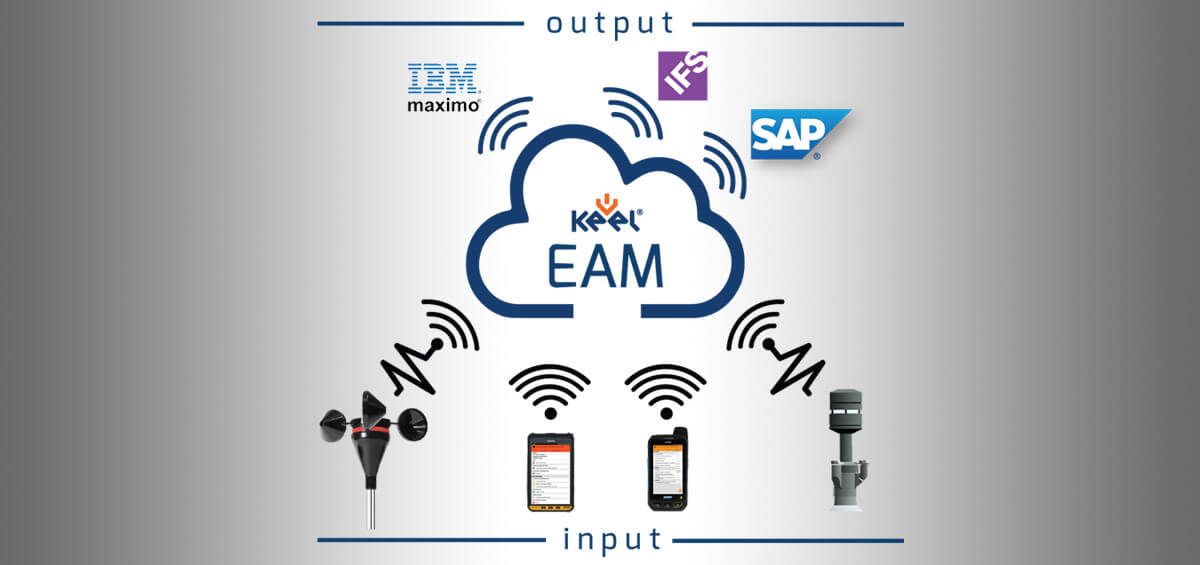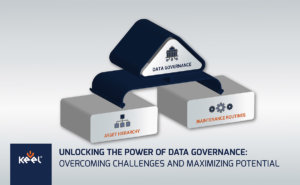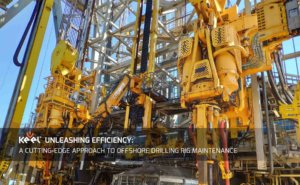With the world going online with the IoT (Internet of things) and Big Data – also known under the broad term, Industry 4.0 – organizations in the asset-intensive industry are challenged to have a strategy in place on how this huge amount of data collected throughout the assets lifecycles can be utilized to optimize the assets reliability, maintainability and availability, and shift to a predictive maintenance philosophy.
IBM data scientists have defined Big Data in four dimensions (the four V´s). See the figure below:
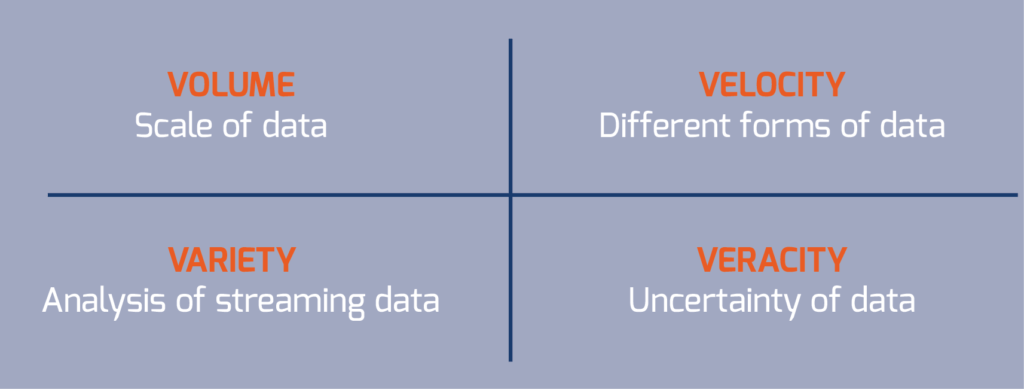
One source of Big Data in the asset-intensive industry is the unstructured and structured data, coming from the numerous sensors installed on a plant. This data should not be restricted to the ICS (Industrial Control Systems) such as SCADA but be reflected in other systems as well, such as existing EAM systems, and generate notifications and work orders based on predictive parameters from the data collected – both from sensors and human input.
With open standards and focus on interoperability, organizations like MIMOSA and MESA are highlighting the interdisciplinary understanding between O&M (Operation and Maintenance) processes, systems and people, which is essential if the full capability of Big Data is to be utilized on a EAM/ERP level.
Big Data Projection
In an article from Forbes it is stated that in 2025 there will be transferred 100 zettabytes (ZB) in 2025.
In the same article it is stated that:
- 89% of business leaders believe Big Data will revolutionize business operations in the same way the Internet did.
- 83% have pursued Big Data projects in order to seize a competitive edge.
The forecast predicts a market growth from 33 billion USD in 2015 to 84 billion USD in 2025.
With the industry 4.0 rapidly approaching there is a paradigm shift in the industry, and Big data and IoT are the “hot topics” among organizations in the asset-intensive industries.
Setting the EAM System up for Big data
Usually organizations in the asset-intensive industry use a preventive maintenance strategy – e.g. routine calendar-based inspections and component replacement – based on the OEM (Original Equipment Manufacturer) recommended maintenance intervals and other maintenance intervals that are required from different stakeholders such as regulators and classification societies.
In the present market with new disruptive technology merging all the time organizations need to develop a strategy with clear business objectives and supported policies and procedures, and a clear plan for what equipment/system data should be collected (e.g. based on the criticality/risk assessment of the equipment/system) in order to harvest the value from the data.
1. MIMOSA is a not-for-profit trade association dedicated to developing and encouraging the adoption of open information standards for Operations and Maintenance in manufacturing, fleet, and facility environments.
2. MESA (Manufacturing Enterprise Solutions Association) International is a global community of manufacturers, producers, industry leaders and solution providers who are focused on improving Operations Management capabilities through the effective application of technology solutions and best practices.
3. 1 ZB = 1000000000000000000000 bytes = 1 trillion gigabytes.
ISO 14224 – “Collection and exchange of reliability and maintenance data for equipment”, provides a standardized way of collecting reliability and maintenance data for equipment during the operational life cycle. The standard is a good source of inspiration when setting up an EAM System.
The figure below illustrates – what other studies have shown – that corrective maintenance is the most expensive form of maintenance and affects the availability in a negative way. Some exceptions are when a corrective/run to failure strategy may be the best way, but as a rule of thumb, the corrective maintenance should always be at a minimum level.
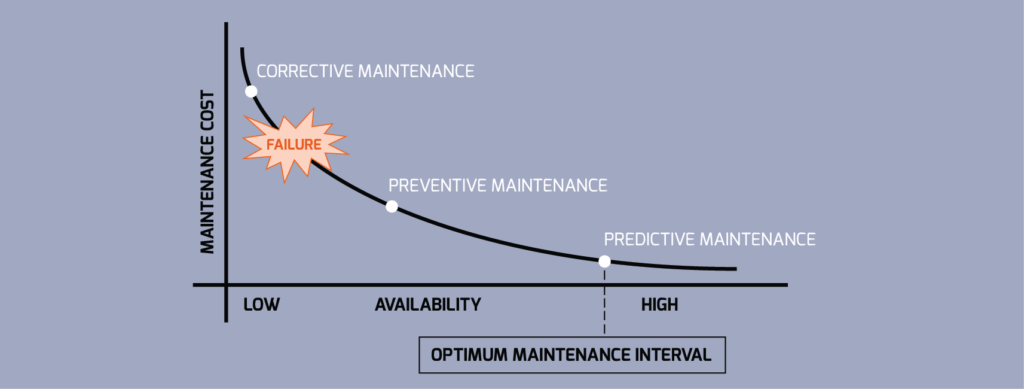
In order to handle Big Data there is a need for a system to be in place to utilize this huge amount of data. I.e. having a good asset registry with quality master data in the system – and a standardized asset structure in the system reflecting the plant.
Put simply, the configuration of the EAM system has to be in place for handling Big Data.
Utilizing the capabilities of the organization’s existing EAM system is essential, to create the foundation for the road to a predictive maintenance philosophy. This includes:
- Having a standardized technical hierarchy reflecting the physical plant, e.g. a location structure.
- Getting all the equipment/systems registered in the EAM. I.e. populating the system with the equipment/systems and its master data. (e.g. manufacturer, serial number, ratings, geo location).
- Register all spare parts in the system.
- Scanning OEM, regulations, company procedures, etc. and define what maintenance intervals can be optimized (there are some maintenance intervals that are mandatory and cannot be changed).
- Getting the DMS (Document Management System) to interact with the EAM. I.e. having manuals, checklists, technical drawings, certificates, etc. attached to the maintainable item.
- When the foundation is made, the first step is taken to a predictive maintenance philosophy.
Definitions
- Industry 4.0 – The fourth industrial revolution, is a collective term embracing a number of contemporary automation, data exchange and manufacturing technologies.
- IoT – Internet of Things is the network of physical objects or “things” embedded with electronics, software, sensors, and network connectivity, which enables these objects to collect and exchange data
- Big Data – Big Data is a broad term for data sets so large or complex that traditional data processing applications are inadequate. Challenges include analysis, capture, data curation, search, sharing, storage, transfer, visualization, querying and information privacy.
- EAM – Enterprise Asset Management is the optimal lifecycle management of the physical assets of an organization. It covers subjects including the design, construction, commissioning, operations, maintenance and decommissioning/replacement of plant, equipment and facilities.
- Interoperability – Interoperability describes the extent to which systems and devices can exchange data, and interpret that shared data.
